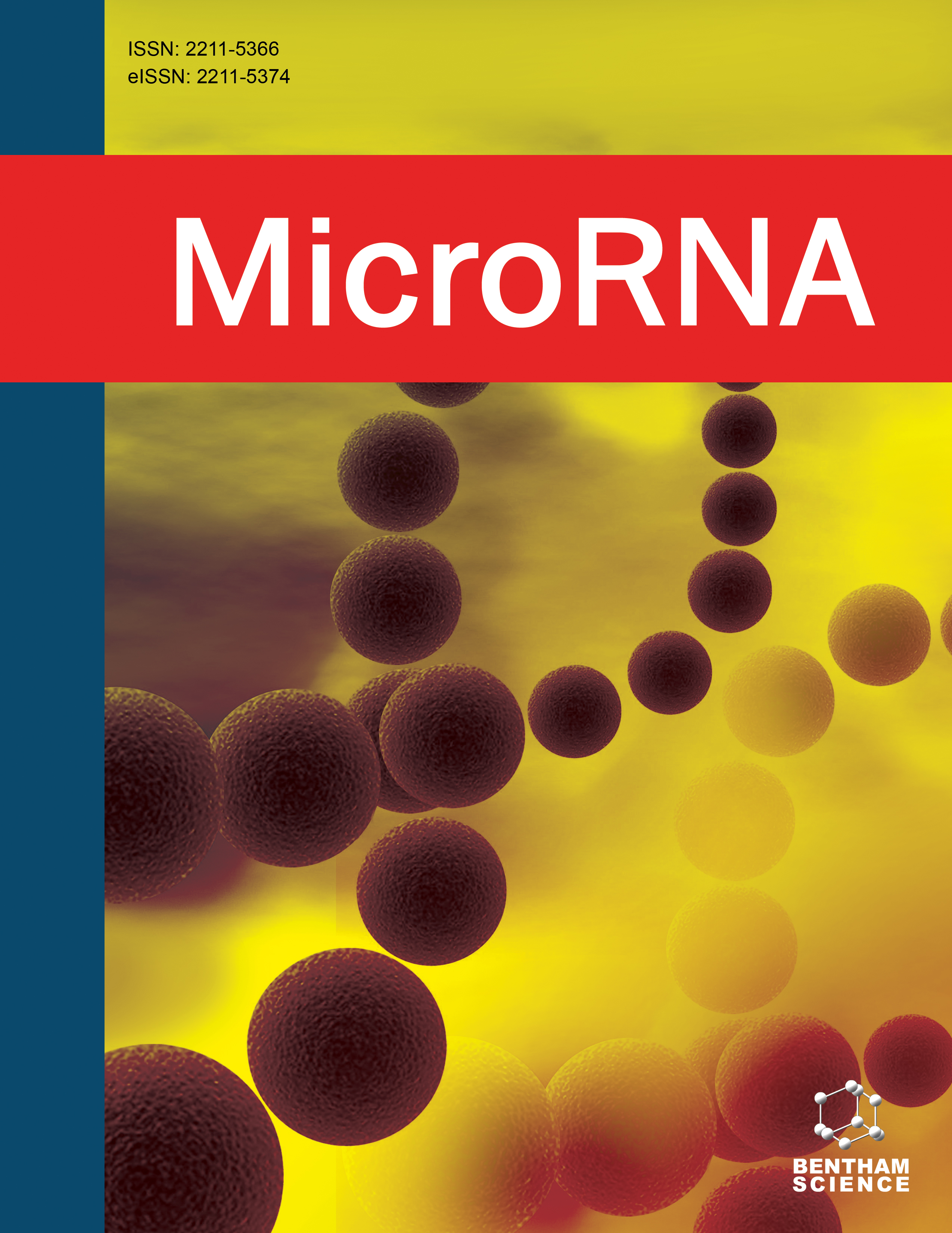-
oa Identification of Hub Genes and Analysis of their Regulatory miRNAs in Patients with Thymoma Associated Myasthenia Gravis Based on TCGA Database
- Source: MicroRNA, Volume 14, Issue 1, Mar 2025, p. 49 - 58
-
- 06 Jan 2024
- 12 Jul 2024
- 26 Aug 2024
Abstract
Myasthenia gravis is an autoimmune disease, and 30% of patients with thymoma often have myasthenia gravis. Patients with thymoma-associated MG (TAMG) have many different clinical presentations compared to non-MG thymoma (NMG), yet their gene expression differences remain unclear.
In this study, we analyzed the Differentially Expressed Genes (DEGs) and analyzed their regulatory microRNAs (miRNAs) in TAMG, which will further clarify the possible pathogenesis of TAMG.
DEGs were calculated using the RNA-sequencing data of TAMG and NMG downloaded from The Cancer Genome Atlas (TCGA) database. R software was then used to analyze the gene ontology (GO) and Kyoto Encyclopedia of Genes and Genomes (KEGG) pathways of DEGs, while STRING was applied to build the protein-protein interaction (PPI) network and Cytoscape to identify and visualize the hub genes. Immune infiltration significances of hub genes were also explored by using the TIMER database and TCGA database. Upstream microRNAs (miRNAs) of the hub genes were predicted by online software.
We comparatively analyzed the gene expression differences between TAMG and NMG groups. A total of 977 DEGs were identified between the two groups (|log fold change (FC)| >2, adjusted P value <0.050), with 555 down-regulated genes and 422 up-regulated genes. Five top hub genes (CTNNB1, EGFR, SOX2, ERBB2, and EGF) were recognized in the PPI network. Analysis based on the TIMER and TCGA databases suggested that 5 hub genes were correlated with multiple immune cell infiltrations and immune checkpoint-related markers, such as PDCD1, CTLA-4, and CD274, in TAMG patients. Lastly, 5 miRNAs were identified to have the potential function of regulating the hub gene expression.
Our study identified 5 hub genes (CTNNB1, EGFR, SOX2, ERBB2, and EGF) and their 5 regulatory miRNAs in TAMG, and the hub genes were correlated with multiple immune cell infiltrations and immune checkpoint-related markers. Our findings could help partially clarify the pathophysiology of TAMG, which could be new potential targets for subsequent clinical immunotherapy.


